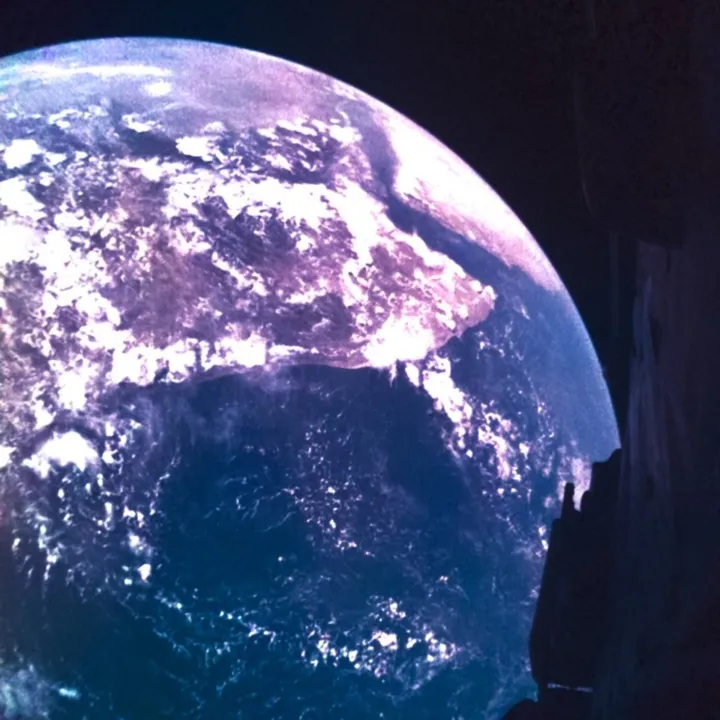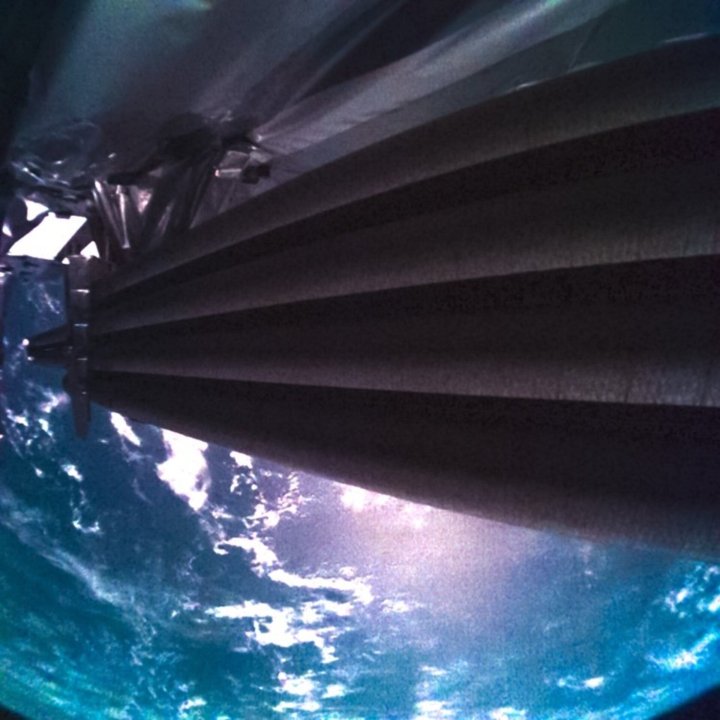The European Space Agency’s Jupiter Icy Moons Explorer (JUICE) spacecraft, which launched last week, has sent back its first images from space — and they are some stunning views of the Earth. The JUICE mission is on its way to explore three of Jupiter’s largest moons — Ganymede, Callisto, and Europa — but it will be traveling for eight years before it arrives at the Jupiter system in 2031.
In the meantime, the spacecraft’s cameras have been taking images pointed back at Earth. The images were captured shortly after launch on Friday, April 14, using JUICE’s monitoring cameras. The two cameras are designed to watch over the spacecraft as it deploys rather than for scientific purposes, so they capture image at a relatively low resolution of 1024 x 1024 pixels. Even so, they managed to get some gorgeous views of the planet as JUICE speeds away from it.

The monitoring cameras are needed to oversee the complex process of the JUICE spacecraft unfurling its various antennae and booms. The spacecraft had to be folded up to fit inside the nose cone of the Ariane 5 rocket that launched it, but once it was deployed into space, it could begin unfurling. It has already unfolded its two large solar panels, spanning a total of 27 meters, and over the next two weeks, it will deploy further structures like its 16m-long Radar for Icy Moons Exploration (RIME) antenna.
One of the monitoring cameras, called Juice monitoring camera 2, or JMC2, is located on top of the spacecraft to oversee the deployment of the RIME antenna. In the image below, you can see the RIME antennae folded up and in the configuration in which it was stowed for launch, and ready to begin deployment in the next few days.

The other monitoring camera, Juice monitoring camera 1, or JMC1, is placed at the front of the spacecraft to oversee the deployment of the solar panels and other antennae.
If you’re hoping for some more detailed images of Jupiter and its moon from the mission, don’t worry: JUICE also has a science camera called JANUS that will capture high-resolution images.
The JANUS (Jovis, Amorum ac Natorum Undique Scrutator) instrument will study Jupiter’s atmospher,e as well as the icy moons, armed with a wheel of 13 different filters to detect particular chemical elements. It will be able to capture images with a resolution of up to 8 feet on Ganymede and around 6 miles at Jupiter.



